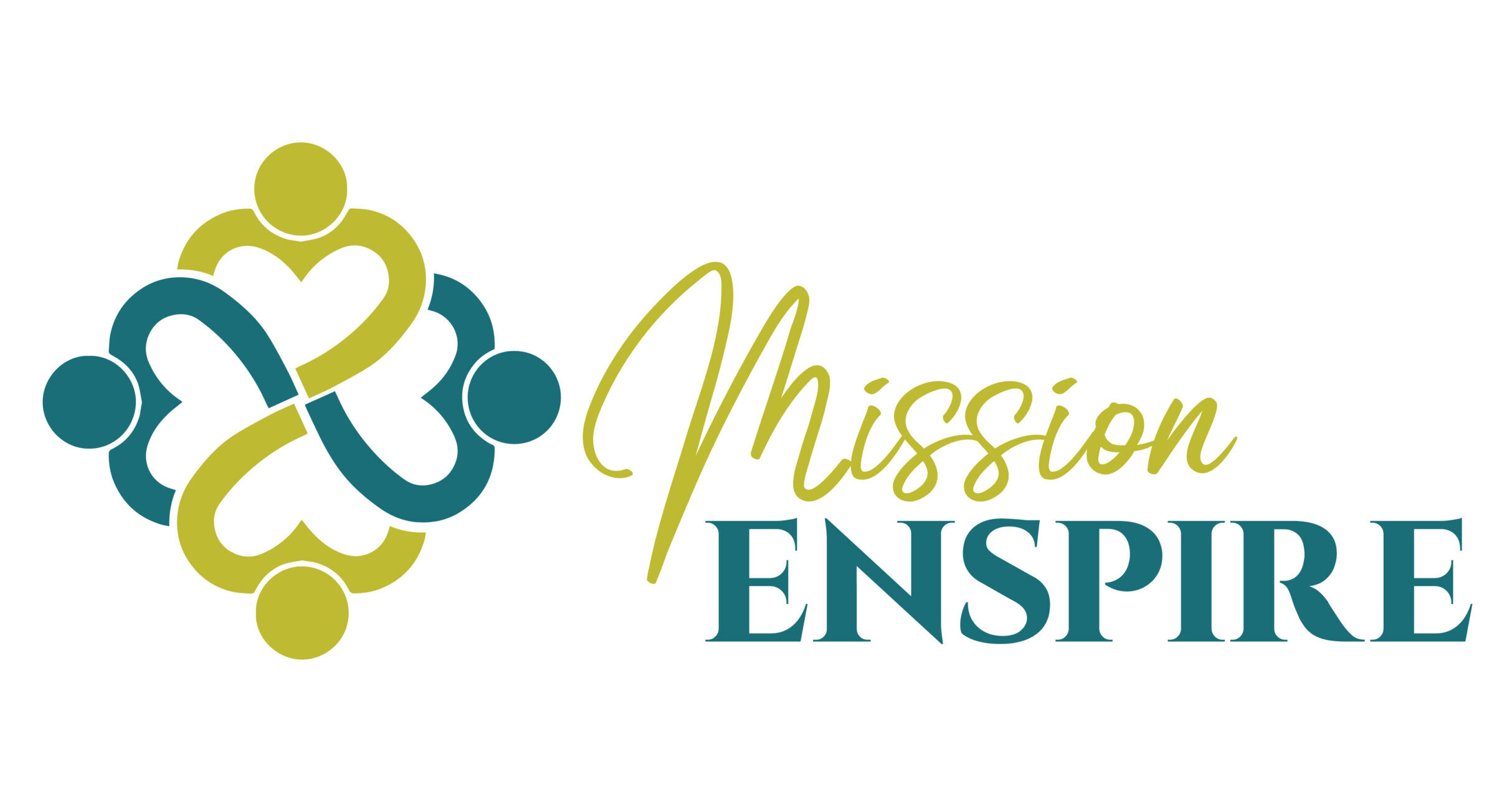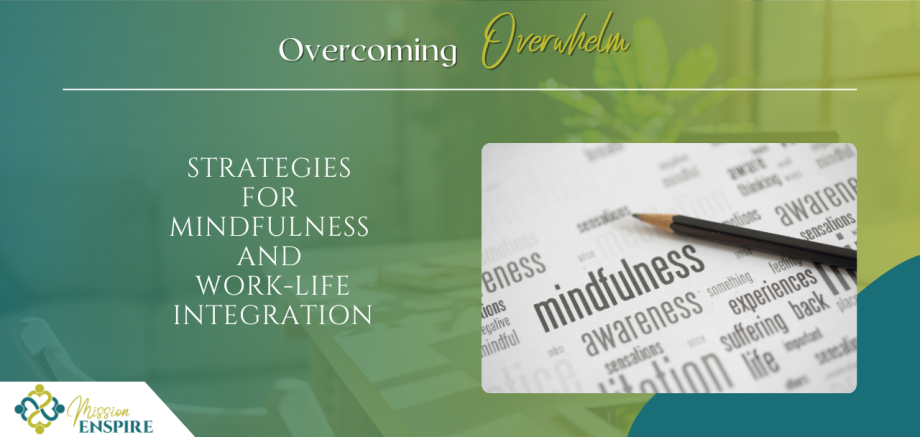Let’s be honest: overwhelm can sneak in even when we’re doing work we love, serving causes we care about, and pursuing goals that truly matter. Whether it’s from competing priorities, unspoken expectations, or the pressure to “do it all,” overwhelm can quietly drain your energy, focus, and joy. And when it lingers, it impacts not just your productivity but your peace of mind and your self-confidence.
Throughout this year, we’ve explored how courage fuels confidence, how to navigate setbacks with resilience, and most recently, the power of self-belief in creating an empowered mindset. We’ve talked about believing in yourself, trusting your voice, and showing up with purpose. But what happens when the weight of responsibilities starts to dim that belief? When your inner critic gets louder not because you doubt your worth, but because you’re simply stretched too thin? That’s where mindfulness and intentional integration come in: not as trendy buzzwords, but as powerful tools to help us refocus, realign, and reclaim our time and energy so we can continue showing up for what matters most.
The Real Cost of Overwhelm
Overwhelm isn’t just about being “busy.” It’s the mental and emotional clutter that comes from feeling pulled in too many directions without enough space to breathe, think, or be. It’s what happens when our plates get so full that we lose sight of our priorities and start operating from reaction instead of intention. And while you may still be getting things done, inside, you might feel:
- Disconnected from your purpose
- Reactive instead of intentional
- Guilty when you’re working and guilty when you’re resting
- Like you’re always behind, no matter how much you accomplish
Here’s what I’ve learned: overwhelm doesn’t just impact our productivity. It erodes the very confidence and self-belief we’ve been working to build. When we’re constantly in survival mode, it becomes harder to trust our instincts, speak up with clarity, or take the courageous steps our goals require. If this sounds familiar, know that you’re not alone. And more importantly, it doesn’t have to stay this way.
What Mindfulness Actually Means in Daily Life
I want to be clear: I’m not talking about a 30-minute meditation or escaping to a mountaintop retreat. (If that’s your thing—go for it!) But for many of us, mindfulness looks like something far more practical and accessible:
It’s being present on purpose.
It’s creating small moments in your day where you pause, reflect, and choose to respond instead of just react. It’s the practice that helps you stay connected to your values and priorities, even when life gets chaotic. Mindfulness can look like:
- Taking 60 seconds to breathe deeply before a big meeting
- Pausing to check in with how you’re feeling instead of pushing through
- Writing down what you’re grateful for at the end of a long day
- Saying a short prayer to center your thoughts before diving into your task list
- Asking yourself, “What do I need right now?” and actually listening to the answer
These aren’t just “nice to haves.” They’re essential resets that help you stay grounded and make decisions from a place of clarity rather than chaos. When we’re intentionally present, we can better discern what deserves our energy and what doesn’t.
Work-Life Balance vs. Work-Life Integration
Let’s go ahead and release the myth of perfect balance. Real life doesn’t always divide neatly into equal parts—and trying to force it often adds more pressure. Instead, I prefer the idea of work-life integration: the art of aligning your values, energy, and time so that both your personal and professional life are supported. This isn’t about doing more; it’s about doing what matters with greater intention and less internal conflict.
Here’s how that starts to take shape:
1. Define What Matters Most Right Now
What season are you in? Sometimes it’s a season of building, other times it’s rest or recalibration. Every yes needs to align with the season you’re in. When you name your current priorities clearly, it becomes easier to say no with clarity and yes with confidence. Try this: Write down your top 3 priorities for this season of life. When opportunities or requests come up, ask yourself: “Does this align with where I am right now?”
2. Establish Rhythms, Not Rigid Routines
Your life doesn’t have to be hyper-scheduled to feel stable. Instead of strict routines, try daily or weekly rhythms that offer structure with flexibility. For example:
- A morning rhythm of prayer, review, and intention-setting
- A Sunday night prep session to map your week
- A midweek pause to assess your energy and reset
- An evening practice of gratitude and reflection
These rhythms help you respond with grace when life shifts because you’ve built in space to pivot. They also create pockets of mindfulness throughout your week.
3. Practice Saying “No” with Purpose
Overwhelm often grows in the spaces where we say yes to everything, except ourselves. Remember what we talked about with self-belief? Sometimes your next level of peace will come from trusting yourself enough to say:
- “Not right now.”
- “That’s not aligned with my current focus.”
- “Thank you, but I need to pass.”
Saying no doesn’t make you unreliable. It makes you honest, healthy, and intentional. It’s actually an act of courage that protects your capacity to show up fully for what matters most.
4. Honor Your Energy, Not Just Your Calendar
You’re not a machine. Some tasks drain you. Others fill you up. Begin noticing your energy patterns: When do you feel focused? When do you feel foggy? What activities energize you versus what depletes you? Use that awareness to plan your week—prioritizing high-energy windows for deep work and building in room for rest. Protect your energy as fiercely as your time. This isn’t selfish; it’s strategic. When you operate from a place of sustainable energy, you make better decisions, communicate more clearly, and show up with the confidence and presence others need from you.
5. Create Boundaries That Serve You and Others
Boundaries aren’t walls; they’re bridges to sustainable success. Whether it’s turning off email after a certain hour, stepping away from social media on weekends, or blocking time to eat lunch without multitasking, it all adds up. Small boundaries create space for big breakthroughs. Boundaries are where your peace gets protected and your priorities get honored.
You Deserve a Life That Supports You
Here’s what I want you to remember: Overwhelm will happen. It’s part of being human and pursuing meaningful work. But it doesn’t have to run your life or rob you of the confidence you’ve been building. With small, consistent choices grounded in mindfulness and intentional integration, you can create a rhythm that supports both your purpose and your peace. You can trust yourself to make good decisions about where to invest your time and energy. You can show up powerfully without burning out.
You are allowed to choose ease. You are allowed to pause. You are allowed to take care of yourself and still be powerful.
As we continue this journey of building confidence and courage together, remember that self-care isn’t separate from success; it’s what makes sustainable success possible.
Challenge for June
As we head into a new month, I invite you to take one small but intentional step:
What’s one boundary you need to create or reinforce? What’s one rhythm that would help you feel more grounded?
You don’t need to overhaul everything. Just begin. Because small steps toward clarity lead to big shifts in confidence, and that’s exactly what we’re building together. In our next post, we’ll explore how to maintain momentum and confidence as we transition into summer, including strategies for staying connected to your purpose when routines naturally shift and schedules become more flexible.
What resonated most with you in this post? I’d love to hear how you’re creating more space for peace and intention in your life. Share your thoughts in the comments below.

